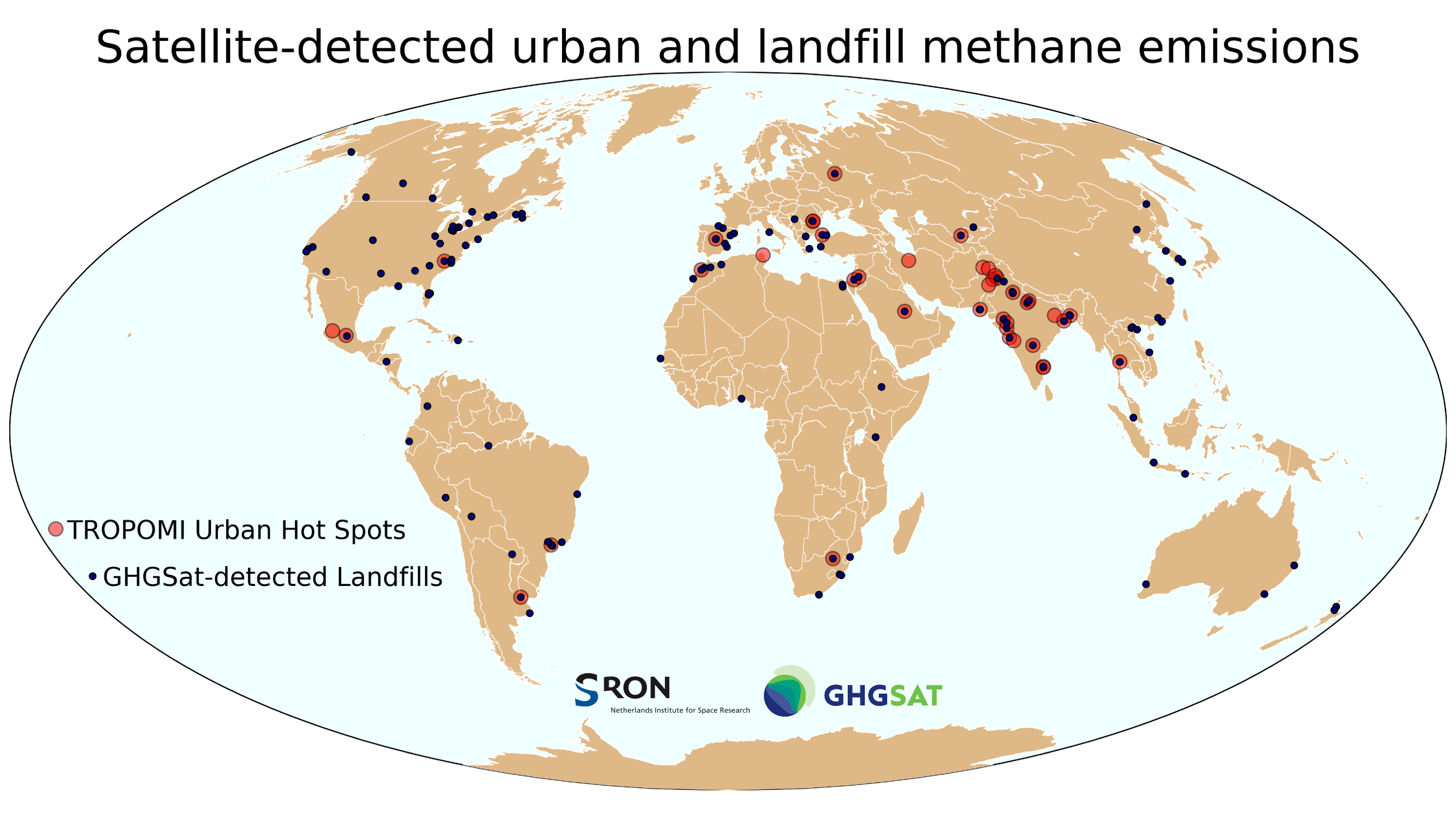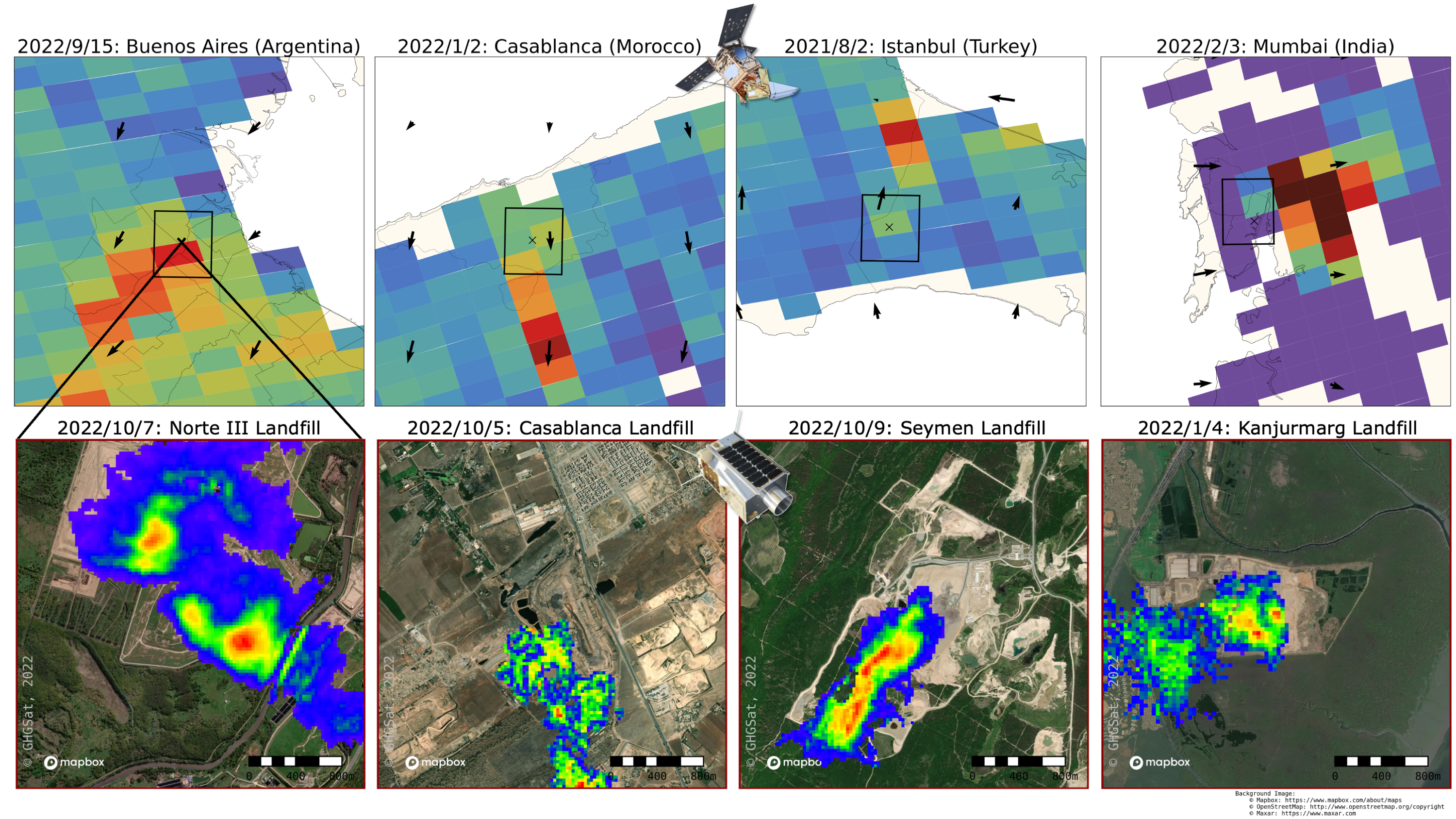The Global Methane Hub, SRON and GHGSat Launch World-first Project to Map Super-Emitting Landfills Globally
• New initiative to characterize, study and monitor landfills, globally, working with NGOs and local partners on mitigation
• Team presents map at COP27 highlighting 100+ methane-emitting landfills 
Waste management is responsible for ~18% of global methane emissions. A large fraction of these emissions comes from a small number of large landfills, making them important mitigation targets. The Global Methane Hub, SRON, and GHGSat are now joining forces to launch a world-first initiative to characterize, study, and monitor landfills around the world. The objective is to improve understanding of these sites, initiate dialogue, and engagement towards purposeful action at the local level. The first output of this initiative, a global map showing the locations of over a hundred methane-emitting landfills, will be presented at COP27.
Methane is responsible for about a quarter of human-made global warming. Landfills and waste dumps are large concentrated methane sources that are also often associated with problems such as ground water pollution, fires, and air pollutants. Reena Gupta, environment advisor for the government of Delhi that is one of the local project partners, said: “We have seen that mismanaged landfills can be a huge environmental risk, exposing lower-income communities to pollution and foul odors. The information provided by satellites can help us improve operations and reduce methane emissions that reduce fire risk and odors. It helps reduce climate emissions but also brings local benefits to our city.”
A 2022 publication led by SRON showed that by combining TROPOMI and GHGSat satellite data, large landfill emissions can be detected and characterized. TROPOMI’s global coverage is used to find emission hot spots around the world after which GHGSat’s targeted high-resolution observations are used to find emissions from individual landfills within those hot spots. The study covered four landfills, including one in Buenos Aires whose emissions had a climate impact equal to that of 1.5 million cars. During the C40 meeting in October, Buenos Aires was one of thirteen cities that committed to reducing their waste emissions by 30% by 2030.
Now SRON and GHGSat are expanding their collaboration in a new project financed by the Global Methane Hub, a philanthropic fund based in Chile established to support catalytic investments that lead to methane reductions, with waste as one of the focus areas. Marcelo Mena CEO of the Global Methane Hub said: “We are excited to contribute to this initiative to turn observations into tangible emission reductions, and to contribute to improving the quality of underprivileged communities exposed to mismanaged waste.”
Ilse Aben, senior scientist at SRON Netherlands Institute for Space Research, said: “This new research project will drastically expand the number of landfills that we can investigate with partners around the world, bringing transparency and accuracy to methane emissions from these sites. A critical step in developing the right strategies to mitigate them.”
Header image: Urban methane emission hot spots detected by TROPOMI (red circles) and locations of methane-emitting landfills that have been seen by GHGSat (blue circles).
Bottom image: TROPOMI urban methane plumes (top row) and GHGSat landfill methane plumes (bottom row) for four different locations. The GHGSat observations were targeted on the landfills based on TROPOMI analysis, approximate GHGSat observation domains are indicated by the black boxes in the TROPOMI images.
SRON Earth Observation: https://earth.sron.nl/

Pages:
- 1
- 2


